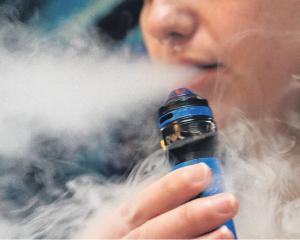The Southern District Health Board faces the possibility of prosecution after a scathing inquiry by the health and disability commissioner into the death of a woman with a serious heart condition in a local hospital.
Rather than treat the woman’s pulmonary embolism, clinicians instead opted to "wait and see", a decision with fatal consequences.
After 17 hours in hospital, the critically ill woman died, despite multiple opportunities for doctors to step in and provide emergency treatment.
"While I acknowledge the considerable improvements the SDHB has made in response to this complaint, I consider that there is a high public interest in holding the SDHB accountable for having severely departed from the accepted standard of care in the services it provided to Mrs A," commissioner Morag McDowell said.
Her report, which did not name the doctors or hospital involved, said the patient (Mrs A) had a CT scan soon after she arrived at the emergency department which confirmed a massive embolism which was having a significant impact on Mrs A’s wellbeing.
Despite that, doctors decided to monitor Mrs A’s progress rather than start administering thrombolysis, a treatment used to dissolve blood clots, to the patient.
"[There were] a number of failures by numerous SDHB staff across the ED and the respiratory teams, including the failure to exercise sound clinical judgement and assess the woman’s condition critically," Ms McDowell said.
"These failures indicated a pattern of poor care across the woman’s patient journey, as well as a culture of non-compliance with SDHB’s policies and procedures."
SDHB acting chief medial officer Dr John Eastwood said the board acknowledged it had fallen short in its care of Mrs A and extended its deepest sympathies to her family.
"We have met with, and are very grateful to, the family members who raised this complaint with the HDC," Dr Eastwood said.
"We have heard their call for us to implement change which is effective, long lasting and meaningful."
The board had implemented a deteriorating patient, recognition and response programme to address issues the commissioner had singled out regarding junior staff not referring Mrs A to a senior doctor.
"This programme includes a clinical governance committee that oversees our recognition and response systems.
"The committee is considering national campaigns in this area and has looked at areas within the DHB that could be improved."
The board was working on other areas in Ms McDowell’s report, including care documentation, issues of supervision and clinical support for staff, and effective communication among staff members and with patients’ families.
Ms McDowell’s report highlights a litany of miscommunication, confusion and poor record keeping.
She noted several times when the SDHB and the clinicians could not establish who had been making decisions about Mrs A’s care, or when clinical notes could shed no light as to which of several clinicians might, or might not, have taken action.
"There were repeated failures involving numerous individuals across the ED and the respiratory team," Ms McDowell said.
"I consider this to be a service delivery failure for which, ultimately, SDHB is responsible."
It is rare for the commissioner to refer a health provider to the director of proceedings for them to consider taking legal action.
The director of proceedings has no power to award compensation but could bring a case against the SDHB to the Health Practitioners Disciplinary Tribunal and/or the Human Rights Review Tribunal, and negotiate an informal resolution by way of agreement between the parties.
Mrs A: Her final hours
10am: Mrs A, in her 60s and fit and normally healthy, visited her doctor after five days with shortness of breath; heart strain is tentatively diagnosed and a transfer to hospital arranged.
2.23pm: Mrs A arrives by ambulance, is seen 15 minutes later, and a scan is ordered.
4.56pm: Scan confirms Mrs A has a pulmonary embolism.
6pm: Mrs A reviewed by the admitting medical registrar who, after talking to the on-call respiratory consultant, decides the risk of thrombolysis outweighed the benefits.
7.30pm-7.50pm: Mrs A’s blood pressure drops and her "early warning score" hits 9 on three occasions. She is given 1 litre of saline and monitored.
8pm: Mrs A moved to the resuscitation bay.
10.21pm: Mrs A has another period of hypotension.
11.12pm: Mrs A moved to the critical care unit.
6am: Nurse asks a doctor to review Mrs A, no changes to the plan made as her vital signs were "holding".
6.30am: Doctor reviews Mrs A, decides to speak to a consultant about her later that morning.
7.10am: Mrs A’s daughter presses the emergency bell after her mother loses consciousness. Attempts at resuscitation are unsuccessful. Mrs A suffers cardiac arrest and dies at 7.50am.












